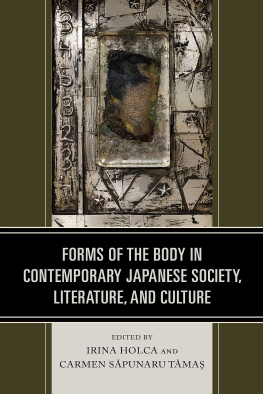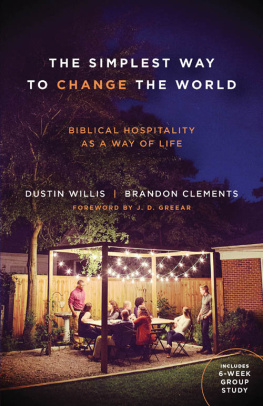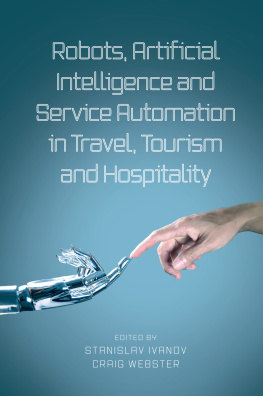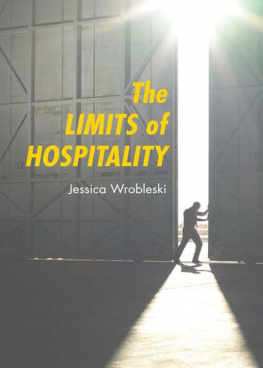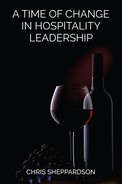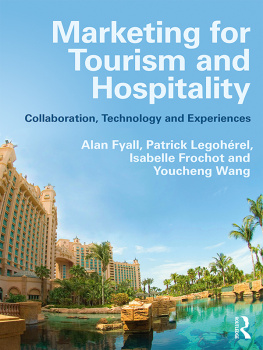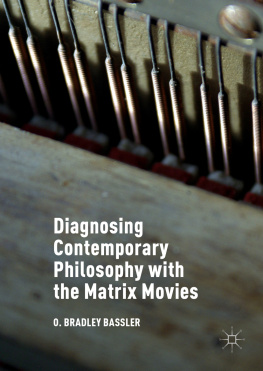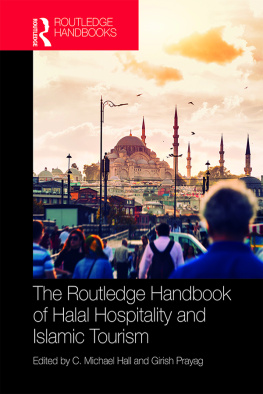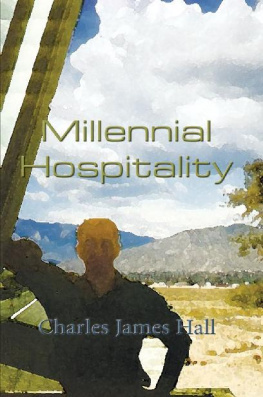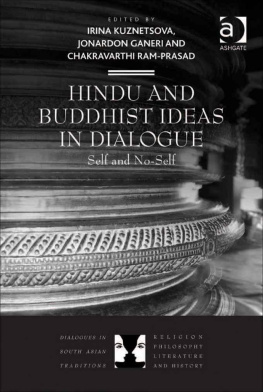HOSPITALITY OF THE MATRIX
HOSPITALITY
OF THE MATRIX
Philosophy, Biomedicine, and Culture
Irina Aristarkhova
Columbia University Press New York

Columbia University Press
Publishers Since 1893
New York Chichester, West Sussex
cup.columbia.edu
Copyright 2012 Columbia University Press
All rights reserved
E-ISBN 978-0-231-50408-9
Library of Congress Cataloging-in-Publication Data
Aristarkhova, I. (Irina)
Hospitality of the matrix : philosophy, biomedicine, and culture / Irina Aristarkhova.
p. cm.
Includes bibliographical references (p. ) and index.
ISBN 978-0-231-15928-9 (cloth) ISBN 978-0-231-15929-6 (pbk.) ISBN 978-0-231-50408-9 (e-book)
1. Birth (Philosophy) 2. Human reproduction. 3. Reproduction. 4. Sex role. 5. Nurturing behavior. 6. HospitalityMiscellanea. I. Title.
BD443.A75 2012
113'.8dc23
2011039140
Cover Image: Faith Wilding, Crocheted Environment (1995; detail) Cover Design: Jessica Volk Stanley
A Columbia University Press E-book.
CUP would be pleased to hear about your reading experience with this e-book at .
References to Internet Web sites (URLs) were accurate at the time of writing. Neither the author nor Columbia University Press is responsible for Web sites that may have expired or changed since the book was prepared.
To Mama and Guna
Contents
There are many people, groups, and organizations that have contributed to my work and supported me during the research for and writing of this book. It would probably take another book to describe these contributions, and I apologize beforehand if I have unwittingly missed thanking one of these many people.
I thank those who encouraged me early on in academia: Olga M. Zdravomyslova, now executive director of the Gorbachev Foundation in Moscow; Simon Clarke, from the University of Warwick, UK, and Gennady Semenovich Batygin (who passed away all too early), from the Institute of Sociology, Russian Academy of Sciences.
I thank my former and current colleagues at the National University of Singapore (NUS) and the Pennsylvania State University. Numerous members of the Department of Womens Studies and the School of Visual Arts have commented on various parts of the manuscript and encouraged me throughout my years at Penn State. In particular, I am grateful to Gabeba Baderoon, Joan Landes, Helen OLeary, Micaela Amato, and Simone Osthoff. They are dear friends who fed me on many occasions literally and intellectually. I thank Lorraine Dowler, Nancy Tuana, Shannon Sullivan, Benedicte Monicat, Lori Ginzberg, and Melissa Wright for being there in the most challenging moments; and for the same reason, Jennifer Wagner-Lawler and Leonard Lawler, without whom this book would not be what it is now. I thank my undergraduate and graduate students at Penn State and NUSyou have been a constant source of challenging questions.
Rosi Braidotti, Marina Grini, Sarah Bracke, Esther Vonk, Laurence Rassel, and members of the OBN and subRosa cyberfeminist art groups prompted my earlier writing on topics of hospitality and the matrix. I thank Luce Irigaray for our correspondence, especially during my work on a Russian translation of her book An Ethics of Sexual Difference. Nayere Lahiji, who shared her expertise in placental pathology during our many discussions on biomedical research, has become a close friend in the process.
The writing was made possible by grants from the Institute of the Arts and Humanities, Penn State University, and the Austrian Governments Visiting Professorship in Gender and Media Art at the Department for Image Science, Danube University Krems. I thank the College of Liberal Arts for the research leave in Spring 2010. Susan Welch, Barbara Corner, Bill Doan, Charles Garoian, Graeme Sullivan, and Carolyn Sachs have made this publication possible through the financial and institutional support of the Colleges of Arts and Architecture and the Liberal Arts. I have also benefited greatly from invitations to give lectures at various venues, including the Franke Institute of the Humanities at the University of Chicago, the Fifth European Feminist Research Conference at Lund University, Transmediale Art and Digital Culture Festival in Berlin, and at the Exit Art Gallery, in Chelsea, New York.
I am grateful to the following persons who supported me personally and/or professionally throughout this project: Lanfranco Aceti, Irina Aktuganova, Jeebesh Bagchi, Ryan Bishop, Mita and Arani Bose, Andreas Broeckmann, Pauline van Maurik Broekman, Elsa Hsiang-chun Chen, Nina Czegledy, Rana Dasgupta, Steve Dietz, Paul Domela, Diana Domingez, Marie-France Dumolie, Maria Fernandez, Charles and Sherrie Garoian, Oliver Grau and Wendy Coones, Dorn Hetzel, Kathy High, Ingrid Hoofd, Eduardo Kac, Matt Kenyon, Nisar Keshvani, Karen Keifer-Boyd, Oleg Kireev and Anna Alchuk (both of whom are missed), Adeline Kueh, Pierette Kulpa, Verena Kuni, Don and Elaine Kunze, Nadir Lahiji, Dana Lam, George and Ruth Landow, Milagros Rivera, John Miller, Victor Misiano, Robert Mitchell, Alla Mitrofanova, Monica Narula, Helene von Oldenburg, Elena Omelchenko, John Phillips, the Pimenova family, the Prvacki family, Claudia Reiche, Boryana Rossa, Chitra Sankaran, Mira Schor, Mithu Sen, Olga Shishko, Gregory Sholette, Shuddhabrata Sengupta, Andrea Sick, Laura Sivert, Shirley Soh, Cornelia Sollfrank, Mary Anne Staniszewski, Margaret Tan, Charissa Terranova, Phillip Thurtle, Eileen Trauth, Svetlana Yaroshenko, and Patricia Zimmerman.
Susan Squier has read various versions of the manuscript and suggested many interesting directions. I thank her for being who she is to numerous colleagues and students and especially for her insistent question, What is at stake here? I have also benefited from her interdisciplinary leadership in and commitment to researching subjects that matter. Faith Wilding, whom I have the privilege of calling a friend, has been an inspiration in myriad ways. She had been bridging theory, biomedicine, and art long before this book took its shape, and I am grateful for her permission to use her artwork for the cover. To me, she has also been a bridge between cultures, languages and political commitments. Ive learned from her the importance of keeping ones door opened, and also how to go on.
I am grateful to the anonymous reviewers for their intellectual generosity and suggestions. I alone, however, am responsible for any mistakes and omissions. Wendy Lochner, Susan Pensak, and their teams at Columbia University Press have been a pleasure to work with. Parts of appeared previously in the following journals: Ectogenesis and Mother (as) Machine in Body and Society (2005); Man as Hospitable Space: Male Pregnancy Project in Performance Research (2009); and Hospitality and the Maternal in Hypatia: A Journal of Feminist Philosophy (2012). Artists Lee Mingwei and Virgil Wong have been generous with their time, and I thank them for permitting me to reprint images of their work here.
Finally, I am grateful to my family members from Moscow and Singapore for their love and support throughout these years. I thank my dearly missed father for introducing me to the subject of philosophy. I thank my mother for introducing me to ethics and politics of philosophy. This book is dedicated to my mother, Valentina Grigorievna Baranova (nee Aristarkhova), and my husband, Gunalan Nadarajan. They have taught me about the work of hospitality.
HOSPITALITY OF THE MATRIX
This book is a systematic study of the philosophical, biomedical, and cultural conceptions of the matrix as it relates to the notion of hospitality. Throughout the centuries, thinkers have been fascinated with generation, with questions about how we come into being, where we come from, and how the world was created. In fact, most mythological, cosmological, and religious stories start with some version of genesis, a story about the creation of the world and of living beings. Western culture is no different, even if it has historically fused the mythological, scientific, and metaphysical aspects of these generation narratives. As Joseph Needham, an embryologist and a well-known historian of science, observed in 1931:
Next page

